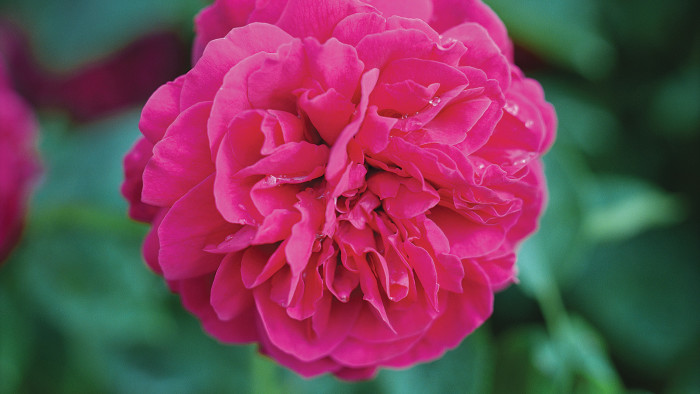Life in full bloom

Simply sign up to the Life & Arts myFT Digest -- delivered directly to your inbox.
Shire, by Ali Smith, with images by Sarah Wood, Full Circle, RRP£18, 128 pages
About halfway through Ali Smith’s new book, Shire, there is a passage that unlocks the intricately wrought complexity, tricksiness and sheer inventiveness that entwines the four stories collected here. “It wouldn’t be long before I’d be too academically undisciplined for Cambridge,” writes Smith. “I was studying writers from Ireland and America – more than one place. I was studying poetry and fiction – more than one genre. Soon, as well as being too interdisciplinary for words, I’d also be being warned repeatedly about being too creative.”
For Smith, however, there’s really no such thing as being too creative. The stories in Shire are not simply classifiable as fiction or fact. They are four highly polished pieces of writing that blend myth, biography, autobiography and poetry.
In the first story, “The Beholder”, a young woman goes to the doctor with a curious ailment. She has a pain in her chest and trouble breathing but she’s also a little down. “How’s life?” asks the doctor. “Well, my dad died and my siblings went mad and we’ve all stopped speaking to each other and my ex-partner is suing me for half the value of everything I own and I got made redundant and about a month ago my next door neighbour bought a drum kit, but other than that, just, you know, the usual.”
The deadpan wit underlying a seemingly mundane complaint is slowly transmuted into a mythic tale as the ache grows – literally – into a small rose bush, a Young Lycidas to be precise. The rose – “very hardy, good repeater, strong in fragrance” – was named after the hero of Milton’s elegy for a musical shepherd who dies at sea. Milton, we learn, was a maker-up of words – including “fragrance”, “gloom”, “lovelorn” and “padlock”. One cannot help but think of the line from Virginia Woolf’s A Room of One’s Own, quoted on the book’s flyleaf: “Who shall measure the heat and violence of the poet’s heart when caught and tangled in a woman’s body?”
The second story, “The Poet”, launches the reader back towards more solid ground with the tale of a poet called Olive Fraser discovering musical notations beneath the broken spines of a set of Walter Scott’s Waverley novels. What begins as a tale in which truth and fiction are hard to pull apart then shifts gear into a biographical note, charting (the real-life) Fraser’s (real-life) academic and creative promise, her time at Cambridge, her later hospitalisation and her poetry; before exploding any sense of authorial distance with the bold line: “The story about her finding the music in the spines of the books is made up by me.”
Wrongfooted, the reader encounters Helena Mennie Shire (the Shire of the title), an academic specialising in medieval and renaissance literature. A companion piece of sorts to “The Poet”, “The Commission” weaves autobiography – Smith’s own brief meetings with the academic and her experiences at Cambridge (“too creative”) – with Shire’s work and Fraser’s poetry.
The final story, “The Wound”, retells part of the 16th century Scots poet Alexander Montgomerie’s allegorical work “Cherrie and the Slae” in which Cupid, roused from sleep, descends to an earthly paradise where he lends his wings, bow and fire-tipped arrows to a mortal. The man takes flight “like Icarus” before accidentally shooting himself in the heart and falling back to earth with a burning ache in his chest.
At every turn, the mythic, hybrid quality of the writing and the stories are entwined; elements from each story reach through to the others, pulling together various strands into something far greater than their individual parts. The ruined grand house of Alexander Forbes of Tolquhon features in “The Commission”, as Smith recalls sitting and reading the great Scottish writers; it turns out to have been the home of a collection of manuscripts later collected in pamphlets published at the insistence of Shire, who in turn was an authority on the music and poetry of the court of King James VI of Scotland that included Montgomerie.
What emerges from the whole is a celebration of writing, writers and their long artistic lineages. In particular, Shire is about female writers; Fraser, Shire and Smith are – the author intimates – part of a community, supported by each previous generation, and stretching back to the fictive Shakespeare’s sister of whom Virginia Woolf wrote in A Room of One’s Own: “For great poets do not die; they are continuing presences; they need only the opportunity to walk among us in the flesh.” Shire, an inventive, complex, playful yet slight book, allows them not just to walk but to fly.
Comments